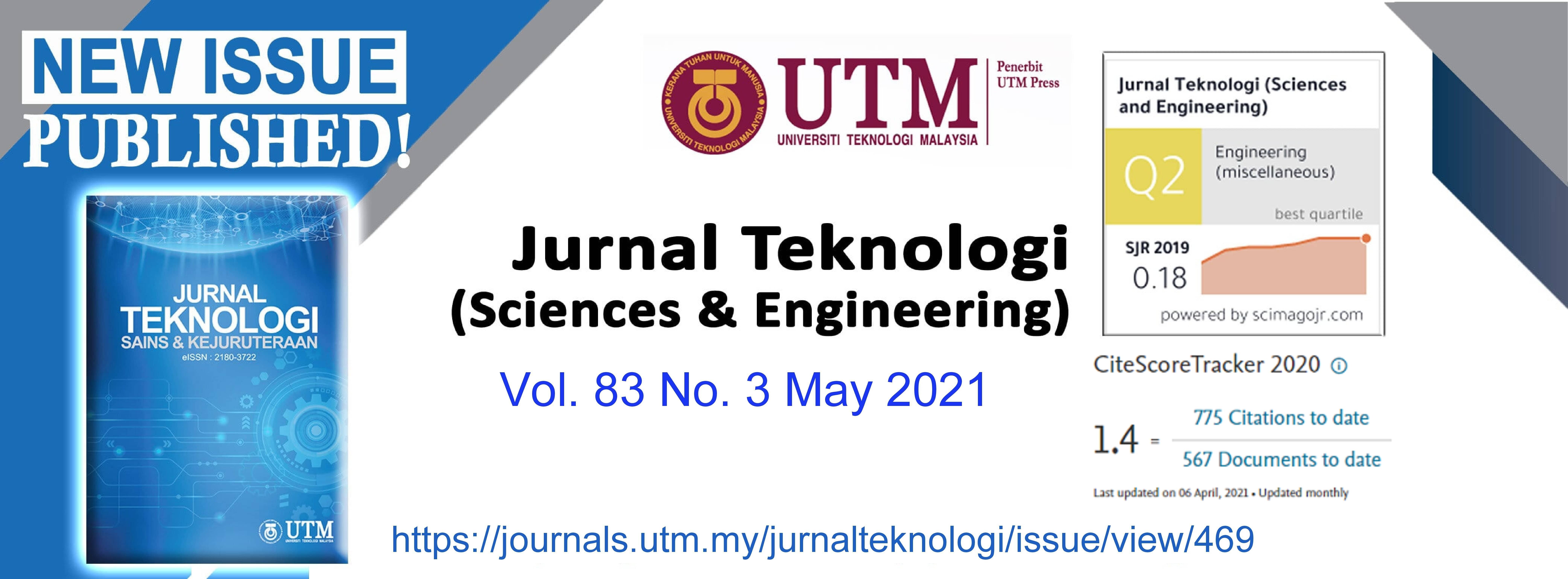WAVEFORM CLASSIFICATION AND RETRACKING OF JASON-2 AND JASON-3 IN HALMAHERA SEA
DOI:
https://doi.org/10.11113/jurnalteknologi.v83.15125Keywords:
Coastal altimetry, classification, retracking, Jason-2, Jason-3Abstract
The accuracy of sea surface heights (SSHs) estimation from satellite altimeters is strongly influenced by the microwave reflected signals (or waveforms). Waveforms in open oceans generally have ideal shapes following the Brown (1977) model. However, in coastal and shallow waters, the signals are disturbed by lands, thus resulting in complicated waveforms (non-Brown). Non-Brown waveforms produce inaccurate SSH estimations; therefore, specialized protocols such as waveform classification and retracking are crucial when attempting to produce accurate estimations. In this study, waveforms of Jason-2 and Jason-3 satellite altimeters in the Halmahera were classified and retracked using several algorithms, such as Offset Centre of Gravity (OCOG), Ice, Threshold, and Improved Threshold. The results showed that waveforms in the Halmahera Sea had ten generic classes with dominant class of the Browns. The validation results showed that all retrackers (except OCOG) had the value of correlations exceeding 0.75, and Root Mean Square Error (RMSE) smaller than 25 cm at a distance of 5-20 km from the land. The Threshold 10% was the most common retracker that appeared with the highest improvement percentage (IMP), meanwhile the Ice retracker consistently produced the best correlation (0.86) and the lowest RMSE (16cm). The retracking results showed that waveform retracking generally can improve SSH estimation accuracy from ocean (standard) retracker.
Downloads
Published
Issue
Section
License
Copyright of articles that appear in Jurnal Teknologi belongs exclusively to Penerbit Universiti Teknologi Malaysia (Penerbit UTM Press). This copyright covers the rights to reproduce the article, including reprints, electronic reproductions, or any other reproductions of similar nature.
















